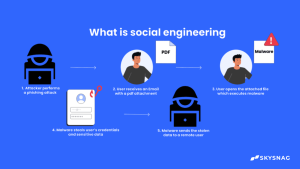What is Honeytrap and how to prevent it?

The Internet has provided the average person with a world of opportunity, but it has also made it simple for fraudsters to select their victims. Through the Internet, there are several frauds and other fraudulent activities that prey on innocent individuals. Honey trapping is one of the most popular internet frauds. The victim and the attacker are involved in a romantic relationship.
So what exactly is a honeytrap? Learn more about it, its varieties, and how to prevent it by reading on.
What is Honeytrap
The honeytrap scam is a technique used to entice an agent into disclosing sensitive information with the aid of a seductive woman. In the real world, it primarily consists of offers from unknown, attractive people who wish to get to know you on a dating site. You’ll either lose all of your money or your computer will become gravely infected if you fall for this scam.
Types of Honeytrap scams
There are two sorts of honey traps that are often used online. These include:
The “Nigerian” con
This takes place when a girl from a distant part of Africa writes to the unfortunate man and relates her depressing tale. The man gets seduced by the money when he learns that the girl has a large inheritance. If he spends money on some legal services to get the girl out of her country, he will receive a portion of the millions. After receiving thousands of dollars from the man, the Internet fling vanishes into thin air.
The “Russian” scam
This happens when the victim claims to be impoverished and asks her future spouse for assistance. These con artists only go after men who are seen to be wealthy. These con artists steadily drain the victim of their money asking for money to pay for a plane ticket or happily taking any “present” the man wants to give the girl and then vanish.
The Mechanism of Honeytrap Scams
On numerous dating websites, scammers search through thousands of profiles to select potential victims. These emails, however, are never connected to any dating website. So how does Honeytrap Scam work?
Basically, the purpose of honeypot scammers’ numerous emotionally misleading claims is to extort money from their victims. The attackers make false dating accounts by exploiting images of other people who appear trustworthy. Attackers then send messages to their intended victims proclaiming their love or desire to begin a real connection. They generally claim a wish to visit their victims once the romantic bond has developed deeply. This typically entails persuading the victim to submit money for “visa processing.”
How to detect Honeytrap Scam
One of the things that people yearn for is love and real connections. Love hurts, though, and romance scams can shatter your heart and drain your bank account. Red flags that point to honeytrap frauds are the best defense against this attack. Here are some pointers for spotting honeytraps.
The Helpless Damsel
Have you ever encountered a desirable but helpless person online? Are they requesting your generosity and resources? Most likely, it’s a honey trap. Scammers attempt to profit from generosity and zeal while utilizing physical allure.
The Affluent
They claim to be wealthy, but can they prove it? Make sure the person on the other side of the screen is who they say they are.
Suspicious conduct
Be alert for any unusual conduct. No matter the circumstance, make an effort to discover as much as you can about the person.
How to Prevent Honeytrap
You can avoid falling victim to these honey trap frauds by exercising the following precautions:
- Emails that land in your “spam” folder shouldn’t be opened. Be wary of emails with odd subject lines, such as an invitation to a special meeting or an offer of a million dollars.
- Never click any links in a fraudulent email, and even if you do, never respond to the sender.
- Never go on dating websites you’ve never heard of, especially ones that pop up in spam emails. It puts your computer in danger.
Most importantly, Skysnag automatically warns you about malicious or suspicious sites. With Skysang’s automated DMARC reports, your domain is protected against BEC, domain impersonation, and email fraud assaults. Protect yourself from falling victim to the Honeytrap scam. Sign up using this link for a free trial today.






